Seashore Bliss Cardigan |
||||||||||||||||||||||||||||
|
|
||||||||||||||||||||||||||||
Crochet DROPS jacket with lace pattern and round yoke in ”Cotton Light”. The piece is worked top down. Size: S - XXXL.
DROPS 169-16 |
||||||||||||||||||||||||||||
|
PATTERN: See diagrams A.1 to A.9. Choose diagram for correct size. Diagram A.9 show how to start and end when working in the round. CROCHET INFO: Replace first dc at beg of every dc row with 3 ch. Replace first sc at beg of every sc row with 1 ch. Replace first dc at beg of every dc round with ch 3, finish the round with 1 sl st in 3rd ch from beg of round. At beg of every sc round, replace first sc with 1 ch and finish round with 1 sl st in 1st ch from beg of round. INCREASE TIP: Inc 1 dc by working 2 dc in same dc. DECREASE TIP: Dec 1 dc by working 2 dc tog as follows: Work 1 dc but wait with last pull through (= 2 sts on hook), then work next dc but on last pull through, pull yarn through all 3 sts on hook. TIP ARMHOLE: Size S, M and XL: In the last repeat of A.2 before marker 1 and marker 3 (= beginning of armhole), replace the last chain stitch with a double crochet in the last stitch of the same repeat on previous row. ---------------------------------------------------------- JACKET: Worked back and forth, top down. NOTE: It is important to keep the crochet gauge vertically so that the measurements on yoke will be correct. YOKE: Work 123-123-134-134-138-140 ch on hook size 4 mm / G/6 with Cotton Light. Work 1 dc in 4th ch from hook (= 2 dc) - READ CROCHET INFO, 1 dc in each of the next 0-0-4-4-1-3 ch, * skip ch 1, 1 dc in each of the next 6 ch *, repeat from *-* the entire row = 104-104-114-114-117-119 dc. Work 1 row with 1 dc in every dc and inc 19-19-21-21-30-40 dc evenly - READ INCREASE TIP = 123-123-135-135-147-159 dc. Work next row and insert 8 markers in the piece as follows: Work A.1 (= 5-5-8-8-5-8 sts), repeat A.2 over the next 18-18-18-18-24-24 dc (= 3-3-3-3-4-4 times in width), insert 1st marker, A.4 over the first 4 dc, insert 2nd marker, A.2 over the next 12 dc (= 2 times in width), insert 3rd marker, A.4 over the next 4 dc, insert 4th marker, work A.2 over the next 36-36-42-42-48-54 dc (= 6-6-7-7-8-9 times in width), insert 5th marker, A.4 over the next 4 dc, insert 6th marker, A.2 over the next 12 dc (= 2 times in width), insert 7th marker, A.4 over the next 4 dc, insert 8th marker, A.2 over the next 18-18-18-18-24-24 dc (= 3-3-3-3-4-4 times in width), finish with A.3 (= 6-6-9-9-6-9 dc). REMEMBER THE CROCHET GAUGE! SIZE XXL-XXXL: On 5th row (row with dc from RS) in A.2 inc evenly as follows: Between 2nd and 3rd marker and 6th and 7th marker: Inc 6-6 dc. 12-12 dc have been inc in total on row (= 18-18 dc between 2nd and 3rd marker and 6th and 7th marker). Repeat A.2 3-3 times between 2nd and 3rd marker and between 6th and 7th marker: ALL SIZES: On 6th row (row with dc from WS) in A.2 inc evenly as follows: Before 8th marker: Inc 0-3-3-3-6-6 dc (= 24-27-30-30-36-39 dc before 8th marker). Between 7th and 6th marker and 3rd and 2nd marker: Inc 0-0-6-6-6-6 dc (= 12-12-18-18-24-24 dc between these markers). Between 5th and 4th marker: Inc 0-6-6-6-12-12 dc (= 36-42-48-48-60-66 dc between each of these markers). After 1st marker: Inc 0-3-3-3-6-6 dc (= 23-26-29-29-35-38 dc after 1st marker). There are now 179-191-215-215-251-263 dc in total on row. Work next row as follows from RS: Work A.1 over the first 5-5-8-8-5-8 dc as before, A.5 over the next 0-3-3-3-0-0 dc, repeat A.2 over the next 18-18-18-18-30-30 dc (= 3-3-3-3-5-5 times in width), A.4 as before, repeat A.2 over the next 12-12-18-18-24-24 dc (= 2-2-3-3-4-4 times in width), A.4 as before, repeat A.2 over the next 36-42-48-48-60-66 dc (= 6-7-8-8-10-11 times in width), A.4 as before, repeat A.2 over the next 12-12-18-18-24-24 dc (= 2-2-3-3-4-4 times in width), A.4 as before, repeat A.2 over the next 18-18-18-18-30-30 dc as before (= 3-3-3-3-5-5 times in width), A.5 over the next 0-3-3-3-0-0 dc, finish with A.3 over the last 6-6-9-9-6-9 dc as before. SIZE XL-XXL-XXXL: On 8th row (row with dc from WS) in A.2 inc evenly as follows: Before 8th marker: Inc 3-3-3 dc (= 33-39-42 dc before 8th marker). Between 4th and 5th marker: Inc 6-6-6 dc (= 54-66-72 dc between 4th and 5th marker). After 1st marker: Inc 3-3-3 dc (= 32-38-41 dc after 1st marker). Work next row as follows from RS: Work A.1 over the first 8-5-8 dc as before, A.5 over the next 0-3-3 dc, repeat A.2 over the next 24-30-30 dc (= 4-5-5 times in width), A.4 as before, repeat A.2 over the next 18-24-24 dc (= 3-4-4 times in width), A.4 as before, repeat A.2 over the next 54-66-72 dc (= 9-11-12 times in width), A.4 as before, repeat A.2 over the next 18-24-24 dc (= 3-4-4 times in width), A.4 as before, repeat A.2 over the next 24-30-30 dc as before (= 4-5-5 times in width), A.5 over the next 0-3-3 dc, finish with A.3 over the first 9-6-9 dc as before. ALL SIZES: On last row in A.4 (= from WS) insert 1 new marker in the middle of every A.4 (i.e. 18 dc on each side of marker in A.4 = 4 markers). Remove the old markers (= 4 markers remain in piece). Sts between markers are for sleeves (= 48-48-54-54-60-60 dc on each sleeve). When A.4 has been worked 1 time vertically, there are 251-263-287-299-335-347 dc on row. Yoke is now done in size S. SIZE M-L-XL-XXL-XXXL: Work next row from RS as follows: Work A.6 over the first 8-5-8-8-5 dc, continue with A.2 over the next 18-24-24-30-36 dc (= 3-4-4-5-6 times in width), * A.7 over the next 36 dc (= 2 times in width, marker is in the middle of these repetitions), A.2 over the next 12-18-18-24-24 dc (= 2-3-3-4-4 times in width), A.7 over the next 36 dc (= 2 times in width, marker is in the middle of these repetitions) *, A.2 over the next 42-48-54-66-72 dc as before, repeat from *-*, A.2 over the next 18-24-24-30-36 dc (= 3-4-4-5-6 times in width), finish with A.8 over the last 9-6-9-9-6 dc. Work 1-2-3-4-4 rows of A.7. ALL SIZES: Piece now measures 17-18-19-20-21-21 cm / 6¾"-7"-7½"-8"-8¼"-8¼" vertically. BODY: SIZE M-XL: Work as follows from WS: Work A.8 as before, repeat A.2a (see arrow on where pattern beg in the different sizes) 6-7 times in total in width until 1st marker (= right front piece), work 8-10 ch, skip sts between 1st and 2nd marker (= sleeve), work A.2a 13-15 times in total in width until next marker (= back piece), work 8-10 ch, skip sts between 3rd and 4th marker (= sleeve), work A.2a 6-7 times in total in width, finish with A.6. Insert 1 marker in piece, NOW MEASURE PIECE FROM HERE. SIZE S-L-XXL-XXXL: Work as follows from RS: Work A.6, repeat A.2a (see arrow on where pattern beg in the different sizes) 6-7-8-9 times in total in width until 1st marker (= left front piece), work 8-8-10-10 ch, skip sts between 1st and 2nd marker (= sleeve), work A.2a 12-14-17-18 times in total in width until 3rd marker (= back piece), work 8-8-10-10 ch, skip sts between 3rd and 4th marker (= sleeve), work A.2a 6-7-8-9 times in total in width, finish with A.8. Insert 1 marker in piece, NOW MEASURE PIECE FROM HERE. SIZE S-M-L-XL: Work A.6/A.2a/A.8 as before, work the 8-8-8-10 sts under each sleeve as 1st st in A.6. On last row in A.6 and A.8 (row with dc) dec 4-4-4-2 dc evenly on entire row – READ DECREASE TIP = 167-179-191-209 dc. When A.6 and A.8 have been worked 1 time vertically, work next row as follows from WS: Work A.3a over the first 6-6-9-9 dc, repeat A.2a 26-28-29-32 times in total in width, finish with A.1a over the last 5-5-8-8 dc. SIZE XXL-XXXL: Work from WS: A.3a over the first 6-9 dc, repeat A.2a 37-38 times in total AT THE SAME TIME dec 2-2 dc evenly – READ DECREASE TIP, finish with A.1a over the last 5-8 dc = 233-245 dc. ALL SIZES: Repeat A.1a to A.3a vertically. When piece measures 12 cm / 4¾", adjust so that next row is with dc, dec 6 dc evenly = 161-173-185-203-227-239 dc. Now repeat A.2a 25-27-28-31-36-37 times in width. SIZE XL-XXL-XXXL: Repeat dec when piece measures 16 cm / 6¼" from marker = 197-221-233 dc. Now repeat A.2a 30-35-36 times in width. ALL SIZES: When piece measures 20-21-22-23-24-25 cm / 8"-8¼"-8¾"-9"-9½"-9¾" from marker – adjust so that next row is with dc, inc 6 dc evenly. Repeat inc every 3½-3½-2½-2-2-2 cm / 1¼"-1¼"-⅞"-¾"-¾"-¾" 3-3-4-6-6-6 more times = 185-197-215-239-263-275 dc. Repeat A.2a 1 more in width on every inc. When all inc are done, repeat A.2a 29-31-33-37-42-43 times in width. Work until piece measures 36-37-38-39-40-41 cm / 14¼"-14½"-15"-14¼"-15¾"-16⅛" from marker, adjust to finish nicely according to pattern. Fasten off. SLEEVE: SIZE S: Worked in the round. Beg by working mid under armhole as follows: Work 1 sl st in 4th ch of the 8 ch worked in armhole on body. Work 1 ch (= 1 sc). Then work 1 sc in each of the next ch 4, work A.7 over the next 18 dc, work A.2a (adjust pattern according to A.7) 2 times in total in width, work A.7 over the next 18 dc, finish with 1 sc in each of the last 3 ch. Work the 8 sts under sleeve as 1st st in A.7. When A.7 has been worked 1 time vertically, there are 56 dc on last round. SIZE M-XL-XXL-XXXL: Worked in the round. Beg by working mid under sleeve as follows: Work 1 sl st in 4th ch of the 8-10-10-10 ch worked in armhole on body. Work 3 ch (= 1 dc). Then work 1 dc in each of the next 4-6-6-6 ch, work A.7 as before, work A.2a (adjust pattern according to A.7) 2-3-4-4 times in total in width as before, work A.7, finish with 1 dc in each of the last 3 ch. Work the 8-10-10-10 sts under sleeve as 1st st in A.7. When A.7 has been worked 1 time vertically, there are 56-64-70-70 dc on last round. SIZE L: Worked in the round. Beg by working mid under sleeve as follows: Work 1 sl st in 4th ch of the 8 ch worked in armhole on body. Work 1 ch (= 1 sc). Then work 1 sc in each of the next ch 4, work A.7 as before, work A.2a (adjust pattern according to A.7) 3 times in total in width as before, work A.7, finish with 1 sc in each of the last 3 ch. Work the 8 sts under sleeve as 1st st in A.7. When A.7 has been worked 1 time vertically, there are 62 dc on last round. ALL SIZES: = 56-56-62-64-70-70 dc. Repeat A.2a 9-9-10-10-11-11 times in total in width while AT THE SAME TIME on first round with dc dec 2-2-2-4-4-4 dc evenly = 54-54-60-60-66-66 dc. When piece measures 10 cm / 4", adjust so that next round is with dc, dec 6 dc evenly = 48-48-54-54-60-60 dc. Then repeat A.2a 8-8-9-9-10-10 times in width. When piece measures 23 cm / 9", adjust to finish nicely according to pattern, fasten off. Work another sleeve the same way. NECK EDGE: Crochet an edge around the neck. Beg mid front. Work * 1 sc in first dc, ch 3, skip approx. 1 cm / ⅜" *, repeat from *-* around the entire neck. Make sure to avoid a tight neck edge, adjust to finish with 1 sc in last dc on row. Fasten off. ASSEMBLY: Fasten the buttons on left front piece, fasten the top button approx. 2 cm / ¾" from neck edge, fasten the remaining buttons approx. 8-9-9-8-8-9 cm / 3"-3½"-3½"-3"-3"-3½" apart. Button between 2 dc on right front piece. |
||||||||||||||||||||||||||||
Diagram explanations |
||||||||||||||||||||||||||||
|
||||||||||||||||||||||||||||
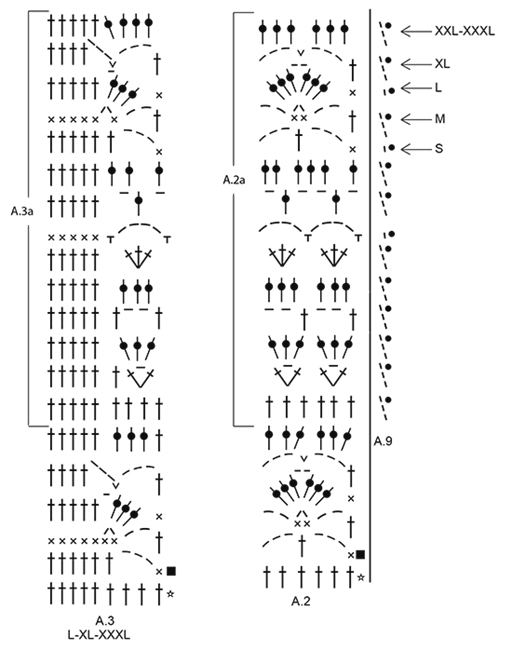
|
||||||||||||||||||||||||||||

|
||||||||||||||||||||||||||||

|
||||||||||||||||||||||||||||

|
||||||||||||||||||||||||||||
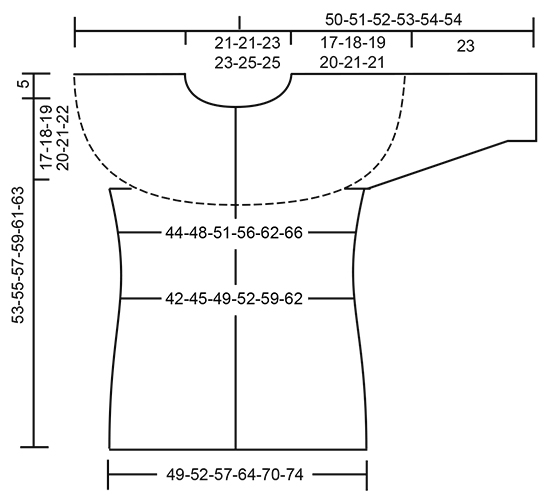
|
||||||||||||||||||||||||||||
|
Have you made this or any other of our designs? Tag your pictures in social media with #dropsdesign so we can see them! Do you need help with this pattern?You'll find tutorial videos, a Comments/Questions area and more by visiting the pattern on garnstudio.com. © 1982-2024 DROPS Design A/S. We reserve all rights. This document, including all its sub-sections, has copyrights. Read more about what you can do with our patterns at the bottom of each pattern on our site. |
||||||||||||||||||||||||||||











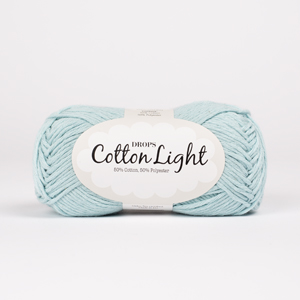










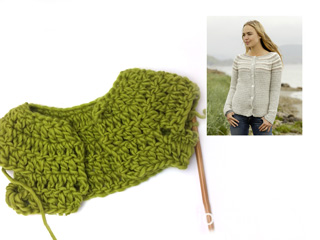

























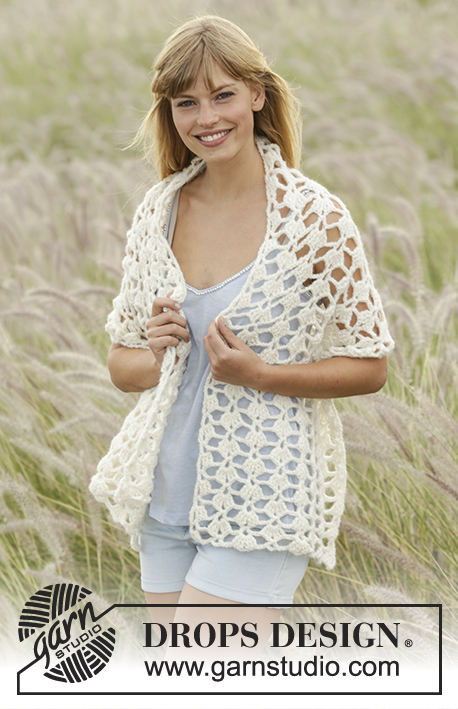
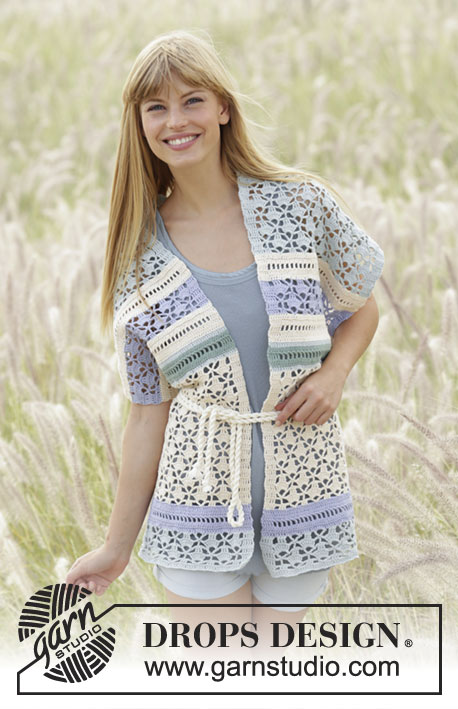






Comments / Questions (165)
Si je peux me permettre de pouvoir demander à Gwendoline si tu as Facebook tu peux me trouver alvara univers imaginaire
18.12.2018 - 23:29Merci beaucoup pour votre aide c est très plaisant de pouvoir poser des question et d'avoir une réponse aussi rapide .
18.12.2018 - 15:09Bonjour, j'en suis au 12cm après le marqueur , j'ai fait les diminution de 6b . Il écrit de répéter A2a en largeur 28 fois (taille L) Doit on continuer A1a et A3a pour les début et fin de rang ? Madame Rochas vous pouvez me contacter si je peut vous aider sa sera avec plaisir .
18.12.2018 - 14:14DROPS Design answered:
Bonjour Gwendoline, tout à fait, vous crochetez toujours A.1a et A.3a comme avant et 28 fois A.2a entre eux - votre adresse mail n'est disponible que le temps que vous ayez une réponse à votre question - personne ne peut vous contacter à partir de cette page. Bon crochet!
18.12.2018 - 14:48Bjr j ai tout recommencer depuis le début vers la fin de l empiècement pour taille M vous dite "Crocheter 1-2-3-4-4 rangs de A.7 (voir flèche dans A.7)" donc pour modèle M 1 fois et non 2 comme vous me répondez donc je me retrouve tjrs avec le même problème je suis sur l endroit et non l envers pour commencer le dos et devant
18.12.2018 - 09:45DROPS Design answered:
Bonjour Marie-Christine, après vérification de la suite, vous crochetez 1 seul rang en taille M et crochetez ensuite A.2a en commençant par la flèche (ce rang suivant est identique à celui de A.7 ainsi le motif continue sans interruption). Bon crochet!
18.12.2018 - 12:03Encore merci pour vos aides, bon comme je fais le modèle en taille M j'ai fini l empiècement mais quand je prends la suite ça nous dit qu on dois être à l envers pour taille M alors que moi je me retrouve sur l endroit en ayant bien crocheter 1 seul rang de A7 lors de la fin de l empiècement
13.12.2018 - 11:50DROPS Design answered:
Bonjour Marie Christine, en taille M, vous crochetez 2 rangs - cf flèche: le 1er rang commence par 1 ms, 3 ml, ... et le 2ème rang commence par 1 Bride, 2 ml, 1 ms dans la bride suivante. Bon crochet!
13.12.2018 - 12:38Est ce que pour ce fameux rg on fait A6 (5b sur les 5 b du rg d avant 3ml et ms sur la 8em b du bas) pour A2 (1ms sur 9ème B 3ml avec 1b sur la 12 b 3ml 1ms sur la 14eme b ou sur la 15eme? Gwendoline peux tu me contacter pour qu on s aide
11.12.2018 - 21:32DROPS Design answered:
Bonjour Mme Rochas, en taille L et XXXL, vous crochetez A.6 sur les 5 premières brides (=4 brides, 3 ml, sautez 1 bride), puis le rang suivant de A.2 (= 15ème rang du diagramme) et le 1er rang de A.7 qui sont les mêmes (= 1 ms, sautez 2 brides, 3 ml, 1 bride dans la b suivante, 3 ml, sautez 2 brides). Bon crochet!
12.12.2018 - 09:12Je suis allée dans une boutique à Lyon " l atelier" Très mauvais acceuil l employée même pas aimable je venais demander de l aide sur le modèle le gérant à demander en me coupant la parole à son employée de s occupée d autre client
11.12.2018 - 16:43Bonjour, après avoir crocheter le 1er rang de A6 , il est marquer de crocheter encore 2 rang de A7 ,faut-il continuer ces 2 rang comme avant (avec A6,A2 A7 etc..) ou faire uniquement A7 sur ce rang . Et si ces que A7 je n'est pas compris comment commencer et terminer le rang . Merci
11.12.2018 - 14:41DROPS Design answered:
Bonjour Gwendoline, vous devez avoir le même motif de A.2 et de A.7, crochetez les 2 rangs comme indiqué dans les 2 diagrammes (= ce sont les mêmes rangs pour la continuité du motif tout le tour du gilet). Vous continuez de crocheter les mêmes diagrammes que pour le 1er rang, = 2 rangs en taille L (cf flèche). Bon crochet!
11.12.2018 - 15:16Bjr sur les rgs de A6 le diag de A2 est il identique à A7 ?
10.12.2018 - 21:46DROPS Design answered:
Bonjour Mme Rochas, quand vous avez terminé A.4, vous avez crocheté 14 rangs, au rang suivant, quand vous crochetez A.7, vous continuez A.2 = 15ème rang de A.2, soit le même que le 1er de A.7. Bon crochet!
11.12.2018 - 08:29Vraiment désolée mais je suis bloquée au rg du début de A6 j'ai beau faire selon votre réponse et je comprends pas on a mis auparavant 4 marqueurs et là vous dites de mettre en les 2 marqueurs où l'on trouve 48 B entre chq marqueurs ce qui je pense correspond aux manches merci de votre aide
10.12.2018 - 18:00DROPS Design answered:
Bonjour Marie-Christine, au dernier rang de A.4 on place 4 nouveaux marqueurs qui vont délimiter les manches (retirez les marqueurs précédents). Au rang suivant en taille M, crochetez A.6 et A.8 pour les bordures des devants, continuez A.2 (rang suivant) et crochetez A.7 au-dessus de A.4 - continuez à faire suivre vos marqueurs qui délimitent les manches. Bon crochet!
11.12.2018 - 08:28